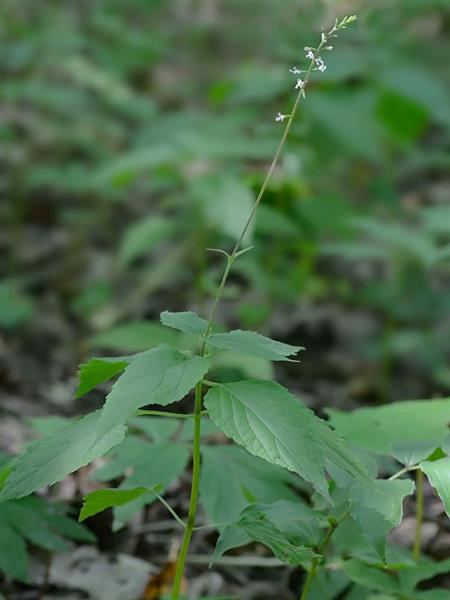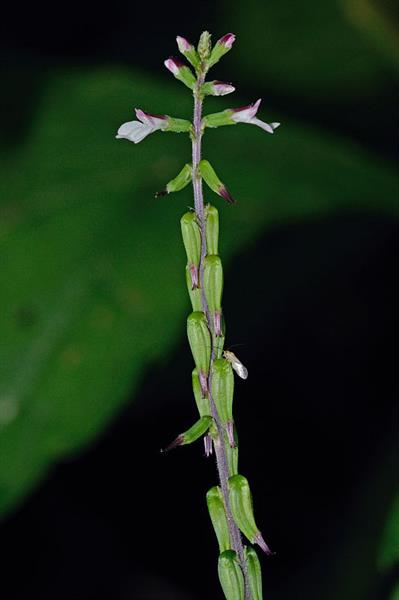
ID notes:The fruits "lopped down" against the stem are unmistakable.
Origin/Endemic status: Native
Taxonomy Comments: An e. Asian relative has been variously treated as a separate species (as here), subspecies, variety, or merely form; the treatment here of the American and Asian plants as separable at species plant makes the Asian plant P. asiatica (H. Hara) O. Degener & I. Degener.
Synonymy: = Phryma leptostachya L. ssp. leptostachya – Fl6; = Phryma leptostachya L. var. leptostachya – FNA17, Va, Lee et al (1996); < Phryma leptostachya L. – Ar, C, G, GrPl, Il, K1, K3, K4, Mi, NcTx, NE, NY, Pa, RAB, S, Tat, Tn, Tx, W, WH3, WV, Barker et al. (2012), Lee et al (1996); > Phryma leptostachya L. var. confertifolia Fernald – F; > Phryma leptostachya L. var. leptostachya – F
Wetland Indicator Status:
- Atlantic and Gulf Coastal Plain: FACU
- Eastern Mountains and Piedmont: FACU
- Great Plains: FACU
- Midwest: UPL
- Northcentral & Northeast: FACU
Heliophily: 3
Hover over a shape, letter, icon, or arrow on the map for definition or see the legend.
 © Gary P. Fleming | Original Image ⭷
© Gary P. Fleming | Original Image ⭷ © Gary P. Fleming | Original Image ⭷
© Gary P. Fleming | Original Image ⭷ © Gary P. Fleming | Original Image ⭷
© Gary P. Fleming | Original Image ⭷ © Gary P. Fleming | Original Image ⭷
© Gary P. Fleming | Original Image ⭷ © Alan M. Cressler | Original Image ⭷
© Alan M. Cressler | Original Image ⭷ © Richard & Teresa Ware CC-BY-NC, permission granted to NCBG | Original Image ⭷
© Richard & Teresa Ware CC-BY-NC, permission granted to NCBG | Original Image ⭷ © Erik Danielson source | Original Image ⭷
© Erik Danielson source | Original Image ⭷ © Scott Ward | Original Image ⭷
© Scott Ward | Original Image ⭷ © Scott Ward | Original Image ⭷
© Scott Ward | Original Image ⭷Feedback
See something wrong or missing on about Phryma leptostachya? Let us know here: (Please include your name and email if at all complicated so we can clarify if needed.)
Cite as...